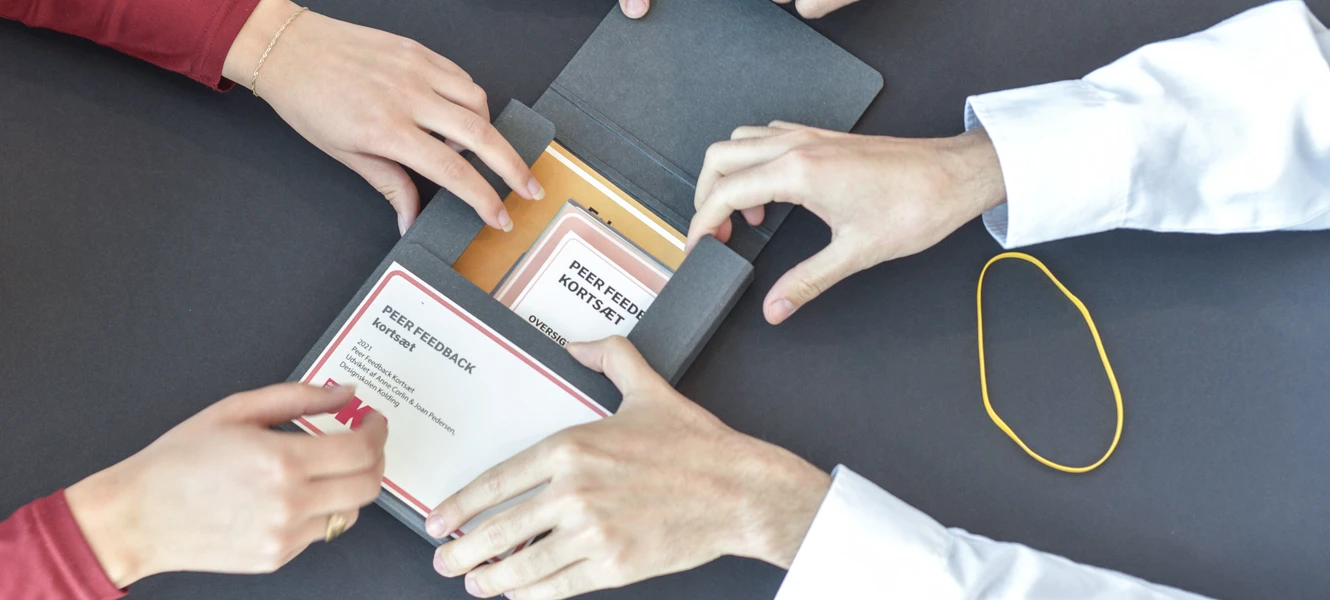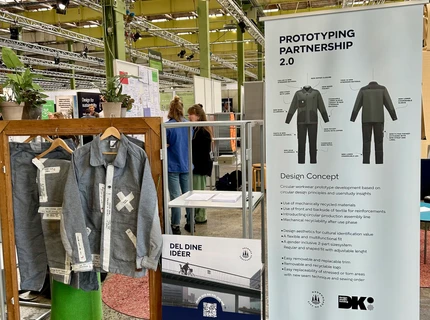
Design students to be equipped for joint learning
A growing need to train students to be more reflective and minimize insecurity in the learning environment led Joan Pedersen, Teaching Assistant Professor and Anne Corlin, Ph.D. to develop a peer feedback tool focussing on making learning a common goal among design students. Specifically: a box with 16 cards that can be used as a common method and work tool for the students to support and use each other constructively throughout their studies.
- The artistic educations generally rank very high in terms of stress among the students. One of the reasons is that the students lack the skill of being able to separate themselves from their projects. Making learning a common pursuit, a process and something we can give to each other is one of the goals of the peer feedback cards, says Joan Pedersen.
The set of cards has been developed as part of Joan Pedersen's and Anne Corlin's recently completed professional post-graduate teacher training which, since January 2019, has been offered to all Teaching Assistant Professors and Teaching Associate Professors at Design School Kolding. The cards are based on the designer's usual, methodical approaches to exploring various issues as well as relevant learning objectives for the design education. The set of cards contains a summary card that describes the main rules for peer feedback, 12 explanatory cards and 3 action cards for notes and reflections. The cards have since been tested in three different courses for both Bachelor’s and Master’s students – twice in person at Design School Kolding and once online.
Different needs
Involving students at different levels of their education revealed that students have different needs when it comes to management of their studies. Bachelor’s students have a greater need to be able to go forward step by step through the feedback session, and the space available on the cards to write their feedback and reflections is sufficient for this group of students. Master's students, on the other hand, desire less control, more self-control of the time, and they request more space to be able to write down their thoughts and reflections. As a result, the peer feedback cards include the option to choose between different approaches to time management, use of the cards and dialogue management.
It is meaningful
All three groups of students experienced the material as meaningful, both in terms of being able to provide feedback to each other and in terms of receiving useful feedback from fellow students. The general feedback is that the material creates a structure that makes it easier to be specific. Thus, the set of cards becomes a framework for an academic dialogue about the students' projects, which at the same time strengthens a focus on the topic.
- Peer feedback provides an opportunity to reflect more deeply on concrete things in the projects, a 1st year Bachelor’s student comments.
- It was reassuring to have your classmates' views and opinions. You felt comfortable giving feedback yourself, another student remarks.
Artistic development
Subsequently the project has received funding for further development of the cards and continues as an Artistic Development Project at Design School Kolding. The next project will focus on whether the material should contain concrete design artefacts that can further strengthen the dialogue between the students. In the subsequent investigations, the target group will be expanded to also include students and lecturers from the University of Southern Denmark, Aarhus University and the School of Architecture in Aarhus.
Peer feedback are learning activities that involve feedback from one student to another. For many students reviewing the work of fellow students is nothing new, but working more intentionally with peer feedback may be a novel experience.
“I think it really helped to have a framework or some guidelines to work with for conducting feedback. It was a big help to know what the other person would like to have feedback on.- MA Student, Design for People”


